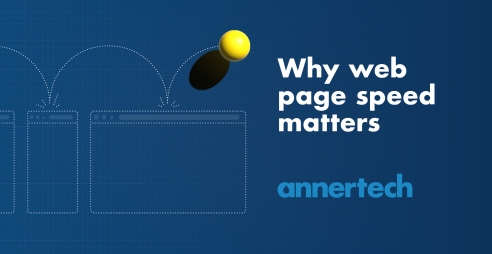Slow website speed? Here are some actions you can take
Previously I wrote on the importance of a fast website, and the difference it will make to your website’s effectiveness. I have not yet found a website that was too fast, so the task of improving website speed can be considered somewhat of a sisyphean task - never fully done. But like all great journeys, you have to start somewhere, so let us see what we can do to make your site faster.
Website speed is a continuous journey
In this article we look at the most common approaches to improving performance - tactics that apply to almost every website. However, every website is different and it is important to first find out why your site is slow.
Luckily, you are not on your own. There is no end to the tools available but let us have a quick look at current leading light - Web.dev’s measurement tool. This measures many aspects of user experience, but we will focus on what it can tell us about performance for now.
6 key metrics are shown, with scores given for your website, as it measures up against others in Google Chromes’ User Experience Report dataset.
Even better, it gives some suggestions as to how things can be improved. For every website, some changes present greater technical challenges than others given the nature of the site in question. It is useful to work on the ‘low-hanging fruit’ first, and achieve some quick wins, before tackling the issues which may require greater work.
No tool is perfect, and they all have their blind spots, and it is worthwhile to evaluate multiple tools so that a balanced view is achieved.

Put less stuff on the page
I have been improving slow websites for a while now, but it is a rare occasion that the above advice does not hold true. Homepages in particular suffer from the clamour from everyone within an organisation to have their presence marked loud and clear, with images, videos, sliders and whatever else they can cram onto the page. And putting less on the page is very hard. As the line attributed to Pascal goes...
If I had more time, I would have written a shorter letter.
Editing is hard work, but crucial to the task of achieving a fast website. It is true that the amount of text on the page will generally have little effect on the performance - unless of course it is all rendered in a custom font that is slow to load and render on the page.
This principle of doing more with less is best started at the design stage, of course - can we do with one less custom font, one less video, one less embedded widget?
If nothing else is done to a webpage, other than to break it down into multiple pages, then this alone is likely to improve performance. Of course, this should be tested and validated with the tools available.
Use images and other media judiciously
A picture may paint a thousand works, but the real test is whether those thousand words, as interpreted by the website visitor, convey the message you want to get across. Too many images are added to websites purely for the purpose of giving ‘colour’ or ‘visual interest’ to the page. Even with the best technical implementation, every image or video adds load to the page.
I am not for a minute suggesting that your websites should revert back to days when HTML did not even have an <img> tag, but I am saying that every image, or other media added to the page should be added with purpose and provide value over and above what text would provide.
Aside from performance, your SEO will also benefit from well-crafted text more than a half-hearted image thrown onto the page.
Leverage caching
Every website tool and server has some caching options built-in, but rarely switched on by default. I implore you to use them, and adjust them to suit your own needs where possible.
In some cases, this may mean that, you may have to wait a little time before your newly added blog-post shows up on the front page of your site for end-users. But if that means that every website user is getting a faster, better experience, it is definitely worthwhile.
Much of Annertech’s performance work focuses on leveraging caching, while still finding ways to make sure that pages and content that must be fresh are still available to the user immediately. Indeed, the hard work is often determining which content and other page resources like images, video and fonts can be cached for that little big longer - every little helps.
Conclusion
With 47% of users expecting web pages to load in 2 seconds or less, it is essential that you ensure your website performs as fast as possible. Not only is it one of Google's official ranking factors, but every second of a delay increases your bounce rate and reduces your conversions.
At Annertech, we take a simple yet effective website speed optimisation approach:
- Measure your website's performance and understand the reasons why it is slow
- Prioritise the pages and features that need the most attention
- Tackle the quickest wins and those with the biggest impact first
- Continually measure and refine your site's performance
Do you still have the need for speed?
Why not get in touch with us to discuss how we can make your website more performant.

Alan Burke Director of Technology
As Director of Technology, Alan plans and architects solutions to the complex problems Annertech solves on a daily basis.

